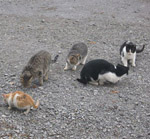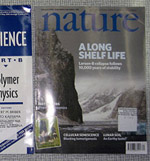Improving the success of endangered species reintroduction
 Eastern barred bandicoot. John Gould, F.R.S., Mammals of Australia, Vol. I Plate 9, London, 1863.
Eastern barred bandicoot. John Gould, F.R.S., Mammals of Australia, Vol. I Plate 9, London, 1863.
Scientists from Australia have presented a tool for improving the success of reintroducing species for conservation.
The reintroduction of threatened and endangered species has emerged as a widespread method for reestablishing populations to stave of extinction. But unfortunately success rates of establishing self-sustaining populations are low - typically less than 50%.
One of the challenges of a reintroduction attempt is figuring out what constitutes good habitat. If species are rare, it is likely we have little data on what habitat requirements they have for survival. This means we often have to rely largely on educated guesses from experts.
A research team led by Carly Cook presented a method for figuring out the habitat preferences of reintroduced species. They presented their findings in the journal Animal Conservation.
The method involves using a regression model to determine what habitat features best predict where a species occurs after reintroduction. The results can then be used to refine our understanding of habitat suitability and make adjustments to our conservation efforts.
They tested out the method with the critically endangered eastern barred bandicoot (Perameles gunnii) in Australia. Scientists had reintroduced the small marsupial to seven sites in Victoria over the prior ten years based on five criteria developed from limited empirical evidence and the opinion of experts.
Unfortunately, none of the reintroduced populations were able to become self-sustaining. The study authors went back to the sites to survey the eastern barred bandicoot and measure a number of variables that might explain current patterns of abundance.
They looked at a number of factors including site size, climatic characteristics, floristic diversity, food availability, soil properties, etc.
They found that abundance was primarily explained by two variables: the intensity of predator control efforts (primarily for red foxes, Vulpes vulpes) and surface rock abundance (surface rock likely makes foraging difficult). This compares to five factors selected in the original model.
Their findings will likely have two major benefits for the conservation of the eastern barred bandicoot:
1) Managers can narrow down the conservation focus for the species to the few sites that meet the two criteria.
2) Managers can concentrate efforts on predator control versus other conservation actions that are not as important.
This method has applicability beyond the eastern barred bandicoot to any threatened species that has been reintroduced to establish self-sustaining populations in the wild. The researchers state,
“Conservation science is a crisis discipline and decisions must often be made regardless of whether rigorous evidence is available. Our study shows that reassessing habitat quality for an endangered species using quantitative, field data can provide valuable new information…We contend that reevaluation of habitat models provide an efficient and effective way to update knowledge and set new directions within a conservation program.”
--Reviewed by Rob Goldstein
Cook, C., Morgan, D., & Marshall, D. (2009). Reevaluating suitable habitat for reintroductions: lessons learnt from the eastern barred bandicoot recovery program Animal Conservation DOI: 10.1111/j.1469-1795.2009.00320.x




 Mammals
Mammals
Reader Comments